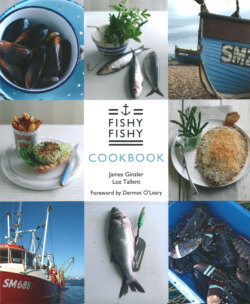Читать книгу Inspired Star Block Quilts - Paul Shovlin - Страница 17
На сайте Литреса книга снята с продажи.
Farming
ОглавлениеIncreasingly fish farming is leading the way in reducing the demands on the sea for wild-caught fish. In Europe sea bass, gilt-head bream and of course salmon are the most common fish being farmed, from Scotland to the Mediterranean. In addition rope-grown mussel farms have made huge inroads in producing large quantities of grit-free mussels. Both rock and native oysters have been farmed for many years. It is certainly acceptable to use farmed salmon instead of their wild-caught cousins as wild salmon stocks are desperately low. As with most things fish related the decision to choose farmed over wild depends on how the fish look and what has been put into them.
The slightly more worrying side of farming starts to appear when the word ‘intensive’ is used in the same sentence. Fish are caught using encircling gear mentioned earlier but are then kept in this moving trap while they are fed everything and anything so they build up as much weight as possible. This is particularly common with tuna, where whole shoals are caught and intensively fed. Farming on this commercial scale doesn’t really help take demand off stocks.
Finally there are more and more entrepreneurial fish farmers who are taking on other species in an attempt to produce a viable farmed fish. Turbot and halibut are both being successfully farmed in small batches and could be a real help in reducing pressure on these slow-maturing fish.
